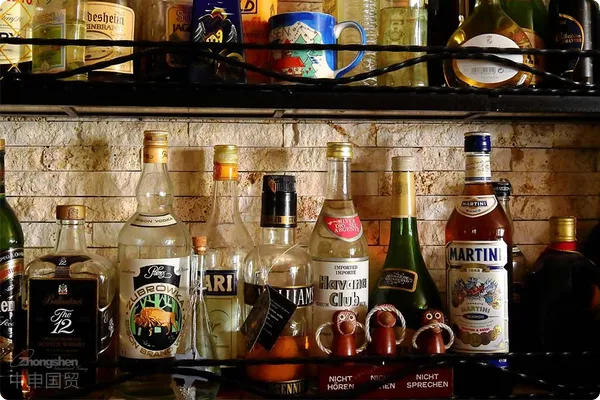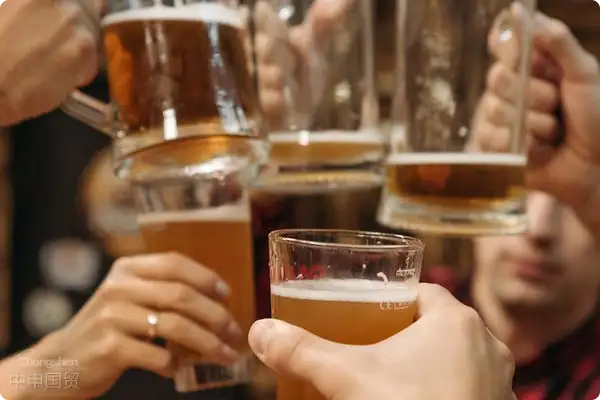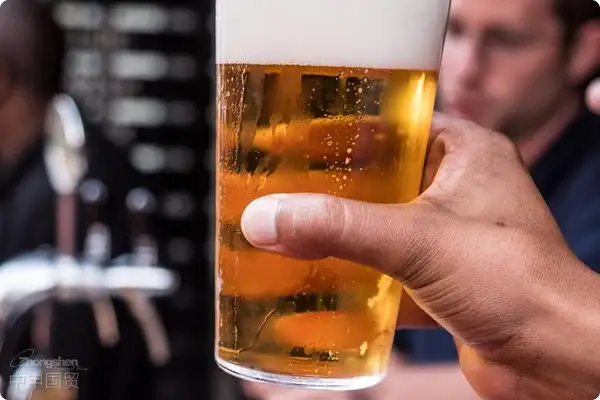- Shanghai Zhongshen International Trade Co., Ltd. - Two decades of trade agency expertise.
- Service Hotline: 139 1787 2118
Planning to introduce high-quality brandy into the Chinese market? Ensuring your product complies with Chinas stringent import regulations and quality standards is key! Brandy, as one of the worlds renowned spirits, enjoys international acclaim for its unique flavor and high quality. In recent years, with the pursuit of high-quality lifestyles, brandys popularity in the Chinese market has been steadily rising. However, for imported brandy to enter the domestic market legally and compliantly, it must meet multiple strict standards and requirements. This article will provide an in-depth analysis of brandys definition, sensory and physicochemical requirements, hygiene standards, food additive usage norms, and labeling requirements to help importers better comply with relevant regulations and ensure their products enter the Chinese market safely and compliantly.
Definition of Brandy
According to GB/T 11856-2008 Brandy and the upcoming GB/T 11856.2-2023 Quality Requirements for Spirits - Part 2: Brandy effective from July 1, 2024, brandy is a distilled liquor made from fruits or fruit juice (pulp) through fermentation, distillation, aging, and blending. Based on raw materials and production processes, brandy can be further classified into the following categories:

1.1 Classification by Raw Materials
- Grape Brandy: Brandy made from grapes or grape juice (pulp), which can be further subdivided into:
- Pure Grape Juice Brandy: Made directly from grape juice or pulp.
- Grape Pomace Brandy: Made from fermented grape pomace.
- Fruit Brandy: Brandy made from fruits or fruit juice (pulp) other than grapes, which can be further subdivided into:
- Pure Fruit Juice Brandy: Made directly from the juice or pulp of a specific fruit.
- Fruit Pomace Brandy: Made from the fermented pomace of a specific fruit.
1.2 Classification by Production Process
- Brandy: A traditional strong distilled liquor.
- Blended Brandy: Brandy made by aging and blending fruit distillates and edible alcohol as the base.
- Flavored Brandy: A beverage liquor made by adding natural spices and flavors (with or without sugar) to brandy.
Sensory Requirements
2.1 Sensory Requirements for Grape Brandy
- Appearance: All grades of grape brandy should be clear, transparent, bright, free from suspended matter and sediment.
- Color:
- Premium, Special, Superior, First, Second Grade: From golden yellow to amber or reddish brown.
- First Grade: Light yellow to golden yellow.
- Aroma:
- Premium Grade: Deep fruity and floral aromas, naturally mellow, with a long-lasting finish.
- Special Grade: A blend of nutty, spicy, and roasted aromas, full-bodied.
- Superior Grade: Bright floral and fruity aromas with oak and toasted notes, balanced and long-lasting.
- First and Second Grade: Complex aromas of fruit, flowers, and oak, free from unpleasant odors.
- Taste and Mouthfeel:
- Premium Grade: Silky with a profound depth.
- Special Grade: Round and mellow.
- Superior Grade: Sweet and smooth with a persistent finish.
- First and Second Grade: Sweet and full-bodied, free from noticeable off-flavors.
- Style: Should possess a distinctive brandy character.
2.2 Sensory Requirements for Fruit Brandy
- Appearance: All grades must be clear, transparent, bright, free from suspended matter or sediment.
- Color:
- Special and Superior Grade: Light golden yellow to golden yellow or amber.
- First and Second Grade: Nearly colorless or slightly yellow.
- Aroma:
- All grades should have harmonious aromas of fruit, sweetness, and oak corresponding to their respective fruit origins.
- Taste and Mouthfeel:
- Special and Superior Grade: Mellow with a long-lasting finish.
- First and Second Grade: Crisp and mellow, free from off-flavors.
- Style: Each grade should exhibit its unique stylistic characteristics.
Physicochemical Requirements
3.1 Physicochemical Requirements for Grape Brandy
- Alcohol Content: All grades require ≥36.0% vol.
- Total Non-Alcoholic Volatiles:
- Premium Grade: ≥3.50 g/L.
- Special Grade: ≥3.00 g/L.
- Superior Grade: ≥2.50 g/L.
- First Grade: ≥1.25 g/L.
- Copper Content:
- Premium and Special Grades: ≤4.0 mg/L.
- Superior and First Grades: ≤6.0 mg/L.
3.2 Physicochemical Requirements for Fruit Brandy
- Alcohol Content: All grades require ≥36.0% vol.
- Total Non-Alcoholic Volatiles:
- Special Grade:≥3.00 g/L
- Superior Grade:≥2.00 g/L
- First Grade:≥1.25 g/L
- Copper Content: All grades ≤6.0 mg/L.
Hygiene Requirements
The hygiene requirements for brandy shall comply with GB 2757-2012 National Food Safety Standard for Distilled Spirits and Blended Alcoholic Beverages, including but not limited to limits for contaminants such as methanol, cyanide, and lead.
Food Additives
According to GB 2760-2024 National Food Safety Standard - Standard for the Use of Food Additives, as a distilled liquor, brandy can use caramel color as a food additive within a limited amount. In addition, other food additives specified in Table A.2 of the standard can also be used in appropriate amounts.
Labeling Requirements
Brandy labels shall comply with GB 7718-2011 National Food Safety Standard for General Rules for the Labeling of Prepackaged Foods. Labeling requirements include:
- Alcohol Content Labeling: Clearly indicate alcohol content in % vol.
- Health Warning: Must include warnings such as Excessive drinking is harmful to health.
- Shelf Life: If alcohol content is below 10% vol, shelf life must be indicated; products with 10% vol or higher may omit shelf life labeling.
Compliance Tips for Import Enterprises
To ensure the compliance and safety of imported brandy products in the Chinese market, importers should pay attention to the following two points:
- Food Additive Compliance: According to GB 2760-2024, imported brandy products must strictly comply with food additive requirements to ensure product purity and quality.
- Chinese Label Compliance: According to GB 7718-2011, ensure Chinese labels on imported brandy meet all compliance requirements, including alcohol content labeling and health warnings.
Conclusion
As a popular spirit, the import process for brandy involves multiple laws, regulations, and quality standards. Importers must strictly comply with national regulations to ensure product safety and compliance, thereby gaining consumer trust and market recognition. This article provides detailed explanations to help importers better understand brandy definitions, sensory and physicochemical requirements, hygiene standards, food additive regulations, and labeling requirements, offering strong support for compliant brandy imports.
Related Recommendations
Category case
Contact Us
Email: service@sh-zhongshen.com
Related Recommendations
Contact via WeChat

? 2025. All Rights Reserved. 滬ICP備2023007705號-2  PSB Record: Shanghai No.31011502009912
PSB Record: Shanghai No.31011502009912









